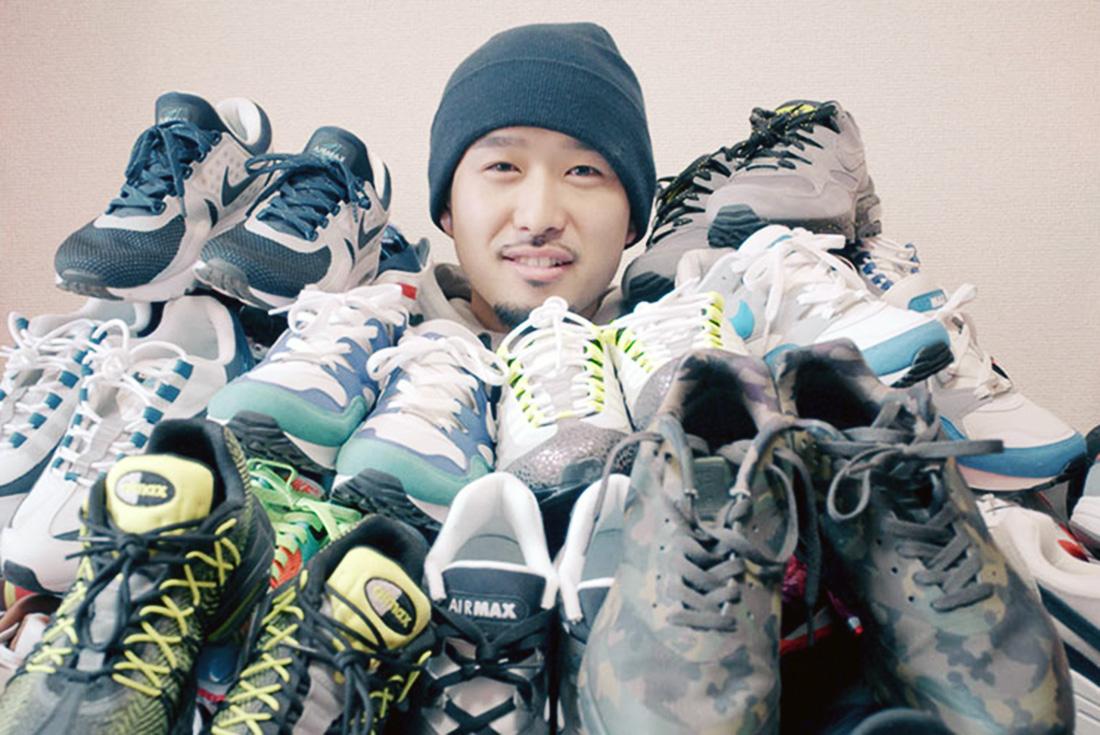To the Max: How Tokyo Became a Sneaker Mecca
is one of the world’s most cherished cultural epicentres, its fascination with fashion perennially at the forefront. Unsurprisingly, the megalopolis has garnered an illustrious reputation as an international mecca for passionate sneakerheads, stimulated by a well-established family of footwear chains, as well as a legendary core of speciality boutiques.
The reputation of Japan’s capital as the arguable number-one sneaker destination outside of the United States wasn’t born overnight. Spurred mainly by the mid-90s phenomenon, fascination with sports footwear has manifested into the city becoming one of the sneaker world’s most influential destinations.
Japan’s fascination with sneakers may have been born during the 90s, but the country’s proud tradition in performance footwear actually dates back to the end of WW2. Spearheaded by brands like Onitsuka/, a wave of top-quality sports footwear emerged from the Land of the Rising Sun during the 50s and 60s, including the infamous .
Interestingly, running and basketball were key markets for Japanese brands, so it’s perhaps no surprise that locals were so quick to gravitate towards similar silhouettes that were simultaneously booming across the Pacific in the United States.
With sneaker brands growing exponentially during the 80s, Japan’s adoption of sneakers as fashion items – and collectables – came relatively soon after. The rabid popularity of Michael Jordan worked to plant the seed for the culture to blossom, but it was the launch of the iconic that kick-started the full-blown photosynthesis of Tokyo’s sneaker obsession.
The famed Sergio Lozano design sent Japanese sneaker fans into a spin, sparking what was one of the first documented reselling frenzies. Pairs of Air Max 95s were exchanged among a zealous legion of collectors, with some pairs fetching up to $3000 a pop – well over their already hefty $250 RRP.
The popularity of the silhouette caught many off guard, Nike included. After a lukewarm response to the debut of the shoe in 1995, things really started to take off the following year as celebs and sportspeople were spotted wearing the colour-clad silhouette. Soon after, the AM95 started to infiltrate Japanese magazines and manga, sparking a bona fide Air Max boom in the Far East. Tokyo’s most avid collectors broke their banks for pairs, while some delinquents broke the law…

But it wasn’t just Nike making strides in Tokyo during the mid-90s. After mixed success during the early part of the decade, established themselves as a major player in the Japanese market shortly after the Air Max wave had swept through the country. As NB gradually shifted elements of their manufacturing business to Asia, specific models were developed to satisfy the local palate, including the Japan-exclusive .

With its lower price tag compared to the AM95, the New Balance 580 became a favourite among the Harajuku youth, who appreciated the shoe’s Rollbar tech. In fact, most pairs of the 580 were picked up for well under retail after excess stock found its way onto sale racks. The model seemed to quickly develop a cult following, but things really took off in 1999, when local retailer teamed up with streetwear label Real Mad HECTIC to finesse a famed collaboration concept.
With Tokyo’s eclectic fashion landscape, it was inevitable that a broad range of sneaker models became popular collector’s items. Aside from Nike and New Balance, consumers were intrigued by models like the , a favourite among those with progressive, tech-focussed tastes. Meanwhile, classics such as the became staples among Tokyo’s movers and shakers.
The mid-90s enthusiasm undoubtedly paved the way for the formation of Tokyo’s legendary sneaker retailers. Revered chain became Japan’s first boutique sneaker store in 2000, opening their debut location in Harajuku in 2000. Hirofumi Kojima’s empire has since expanded to over 30 stores worldwide, including locations in New York City, Seoul, and Bangkok.
Other OGs who were immersed in the mid-90s boom also went on to create their own ventures, most notably Shirahama, the founder of renowned spot WORM TOKYO. A cave of crep wonders for the avid collector, WORM is a relatively small space, but has a big reputation among locals and international visitors alike. In fact, many of the sneaker stores in the city attribute half their foot traffic to tourists seeking these world-famous places of sneaker worship.
The formation of these iconic retailers, as well as the emergence of the avant-garde Japanese streetwear labels like and , contributed heavily to the Western market’s appetite for Japanese-exclusive releases.
The atmos x Nike Air Max 1 ‘Safari’ of 2003 perhaps created the blueprint for Japanese-designed collaborative creps, sparking countless coveted releases since. Today, designers like Chitose Abe and Fragment’s Hiroshi Fujiwara continue to add fuel to the contemporary hype machine.
Tokyo’s long-standing love affair with American style and attitude in many ways catalysed the city’s love for sneakers. However, now it’s the world’s growing adoration of Japanese sneaker culture that continues to define the sneakersphere’s concious of cool.
Be sure to head to our section for more in-depth takes on the sneaker world.
